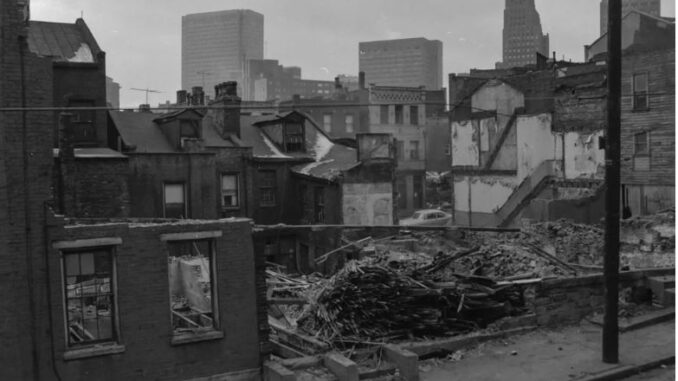
In 1994, I moved into the historic Hill District, a neighborhood often considered to be the cultural soul of Black Pittsburgh.
I lived a short walk from Freedom Corner, an inspiring monument at Centre Avenue and Crawford Street. Dedicated in 2001, it recognizes the rallying point that launched many of the city’s social justice marches and honors a pantheon of activists who helped to halt the avalanche of development that demolished much of the Lower Hill.
My house, with its bright red door, was cradled just a few blocks from the Lower Hill, a neighborhood heralded for its abolitionist history. I was proud to live there. In this neighborhood lay the roots of the community once known as Little Hayti, so named to acknowledge the people’s alignment with the liberation and self-determination that fueled the 1804 Haitian Revolution.

In the 1950s, according to University of Pittsburgh historian Larry Glasco, the Lower Hill had 400 businesses (mostly white-owned) and some 8,000 residents (mostly Black). During an interview for a recent oral history project, one former Lower Hill resident remembered a vibrant, busy place that “glowed like Las Vegas.”
Some 27 years ago, to get to my job as a journalist at the Pittsburgh Post-Gazette in Downtown, I walked through the Lower Hill. As I walked, I often thought of the people — past and present — who shaped this neighborhood’s grand history. They were the muses who fed many of the stories I wrote about the Black community for the newspaper.

Leave a Reply